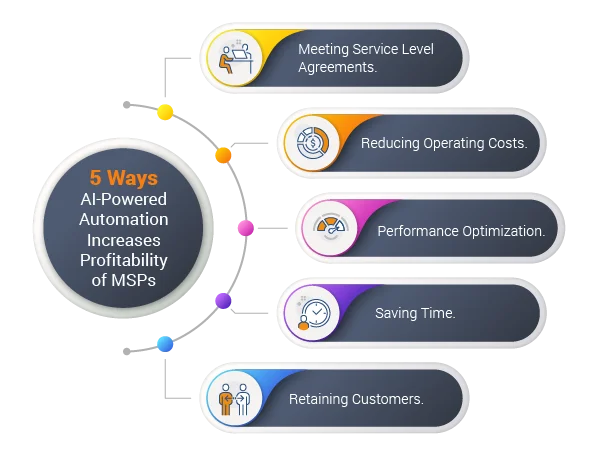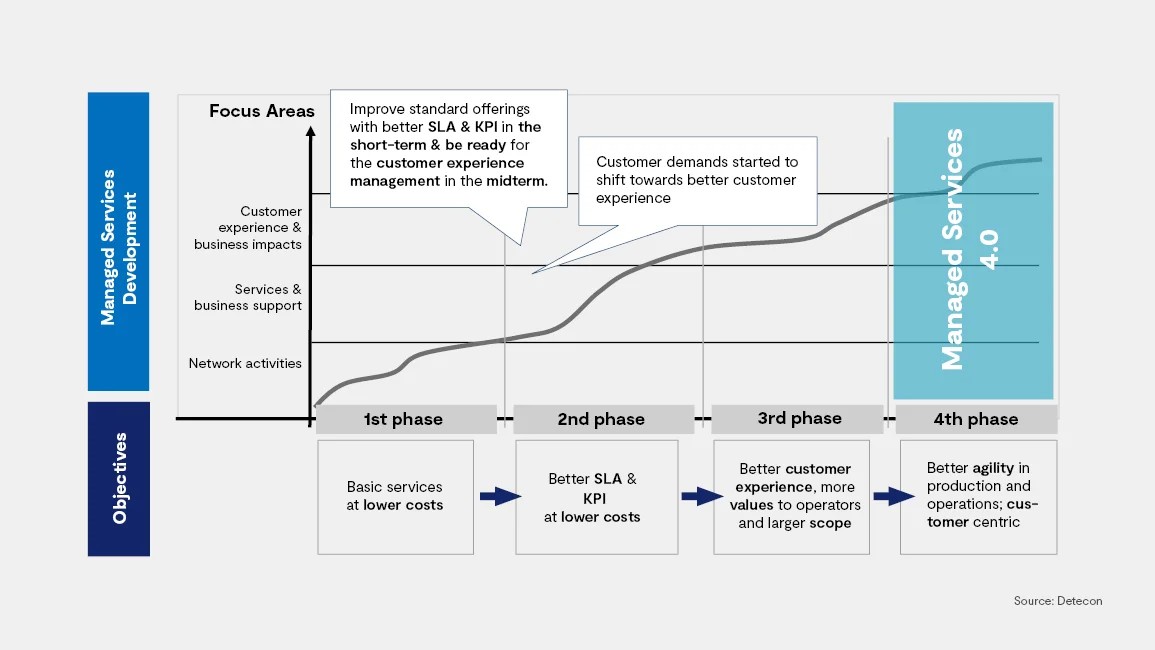
Figure 1: banner
Image source: pyramidsolutions.com
To stay competitive and relevant, businesses must be agile, continually adapting to changing business conditions and ever-evolving consumer expectations. In this context, the role of infrastructure and networks cannot be overstated; they form the backbone of any organization’s digital endeavours. Thus, formulating effective digitalization strategies has become imperative for thriving, surviving, and succeeding in the modern business landscape.
Digital transformation is not merely a buzzword but a fundamental shift in how businesses operate, interact, and deliver value. It encompasses various technological advancements, from cloud computing, big data, and artificial intelligence to the Internet of Things (IoT) and automation.
Contents
- 1 Harnessing Automation for Managed Network Services
- 2 The Power of APIs in Digital Transformation
- 3 Transforming Network Operations with AI
- 4 The Final Frontier: Achieving Zero-Human Touch in Managed Network Services
- 5 Essential Tools for Managed IT Services Automation
- 6 Some Other Benefits of Automation in Managed IT Services
- 7 Conclusion
Harnessing Automation for Managed Network Services
As the world embraces digital transformation, integrating artificial intelligence (AI) and automation in managed network services opens new doors to improved resilience, efficiency, and service-oriented growth. The traditional manual approach to managing network operations is no longer sufficient, with IT workloads stretched to new limits, demanding quicker responses to costly network impacts and threats.
By 2025, around 70% of businesses will have adopted structured infrastructure automation to achieve enhanced flexibility and efficiency.
The Power of APIs in Digital Transformation
Application programming interfaces (APIs) unlock greater access to underlying technologies, allowing enhanced automation in managed services. By combining APIs with intelligent technologies like cloud-based management platforms and machine learning, issues can be swiftly identified and resolved, reducing the need for manual intervention and minimizing errors. This evolution in digital transformation enables organizations to streamline workflows, improve service delivery, and enhance end-user experience.
Transforming Network Operations with AI
Forward-thinking organizations are embracing AI operations to improve service management efficiency. By leveraging data-driven insights, AI operations shape the network experience, facilitating smarter deployment decisions, shorter response times, and quicker incident resolution. The streamlined processes enable better network resource allocation and enhance monitoring for uptime and performance, resulting in improved availability.

Figure 2: Benefits of Automation to MSPs
Image source: automationedge.com
The Final Frontier: Achieving Zero-Human Touch in Managed Network Services
The future of managed network services lies in achieving zero-human touch for level one and two tasks. Organizations can achieve frictionless network development and deployment by integrating AI with automated actions and responses, significantly improving service-request turnaround times. This level of automation is particularly valuable for manufacturing industries, where network uptime is crucial. Predictive and preventative measures can be implemented to avoid costly outages and ensure uninterrupted operations.
Essential Tools for Managed IT Services Automation
To deliver scalable solutions, managed service providers rely on essential tools that streamline operations and enhance productivity. These tools include:
1. Remote Monitoring and Management (RMM):
RMM enables proactive and remote management of customer networks and computers, reducing the risk of failure and minimizing on-site visits for issue resolution.
2. Professional Service Automation (PSA):
PSA software automates daily IT operations, from helpdesk and ticket management to automated testing and customer relationship management.
3. Patch Management Automation (PMA):
PMA ensures systems remain up-to-date with timely and effective patch applications, strengthening network security and stability.

Figure 3: The 4 development phases of Managed Services
Image source: detecon.com
Some Other Benefits of Automation in Managed IT Services
➢Increasing Productivity:
One of the most significant benefits of automation in managed IT services is the substantial increase in productivity. By automating routine tasks and processes, organizations can streamline their operations and reduce the time required to complete various activities. This enhanced efficiency allows IT teams to focus on more strategic initiatives and critical tasks, ultimately leading to higher productivity levels across the board.
➢Improving Quality:
Automation ensures consistency and accuracy in performing tasks, minimizing the risk of human errors. This leads to improved quality of service delivery as manual interventions are reduced, and processes are standardized. Managed IT services can consistently deliver high-quality client outcomes by adhering to predefined workflows and best practices.
➢Scalable Service Foundation:
Automation provides a scalable foundation for managed IT services. As service demand grows, automation allows providers to efficiently scale their operations without experiencing bottlenecks or compromising service quality. Automation enables the managed service provider to handle increased workloads while maintaining operational efficiency.
Conclusion
Managing service Automation is not about replacing human efforts but optimizing processes and enhancing productivity. As businesses embrace digital transformation, automation in managed services becomes increasingly critical for delivering scalable solutions. By leveraging the power of AI, APIs, and intelligent tools, managed service providers can unlock a new era of efficiency, customer satisfaction, and exponential growth for themselves and their clients.
MSPs like STL play a significant role in ensuring a good customer experience, which is vital for your brand. By offering quality services, MSPs enable you to attract more customers, ultimately leading to a considerable boost in your overall revenue.
Automated MSPs conduct thorough audits of network processes to ensure network security compliance. Experienced auditors assess the network against industry best practices, covering crucial areas such as incident management, change management, backup procedures, network monitoring, network documentation, and security reviews. This audit helps identify any vulnerabilities or gaps in the security infrastructure, allowing the MSP to take proactive measures to address them effectively.
Many reputable companies offer RMM software with unique features and capabilities to cater to diverse business needs. An example of RMM software is Kaseya VSA, which boasts an intuitive interface, as depicted here. This exemplary software empowers organizations to manage their IT infrastructure efficiently, ensuring robust network security, proactive incident management, and seamless system updates.
A: Automation in managed IT services mitigates human labour costs and expenses. Automating repetitive and manual tasks minimizes the need for extensive human resources, resulting in significant cost savings. This cost optimization enables the managed service provider to allocate resources strategically and invest in more valuable services and advanced technologies.
Automation in managed IT services boosts output consistency by eliminating human error and standardizing processes. As a result, clients can depend on consistent service quality and outcomes, enhancing their trust in the managed service provider’s capabilities.















